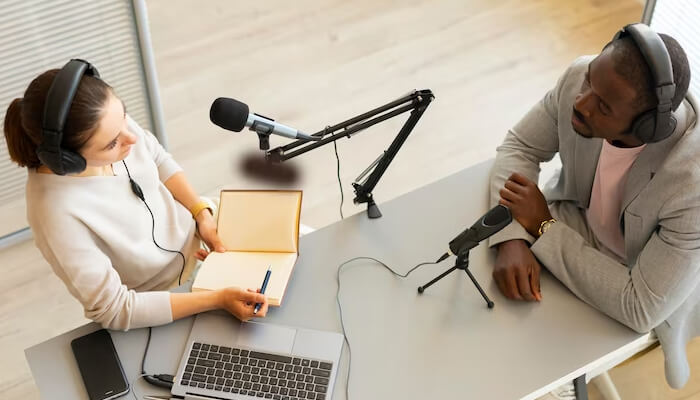Starting podcasts means launching podcasts. It means business owners learn about starting a podcast to reach an audience. Launching a podcast may be overwhelming to do it alone.
Eight Steps to create Podcasts for your business in 2023
Step 1- Choosing a niche
Think about your passion before choosing a niche. It can be anything, movies, fashion, politics, or other topics. If you have some experience it adds to your credibility. The podcasts concentrate on topics to cover over episodes. Ask these questions to yourself, before creating podcasts:
1. Podcast goal
2. Podcast message
3. How to outstand in your niche
4. Decide who and what you are writing for and start a podcast business.
Step 2: Know Your Audience
Your target market or audience determines the podcast’s success. It is vital to choose topics interesting to listeners. Know the audience, work on online networking, and the content to make it interesting after conducting research. Your listeners must hook to you, and it means you must dish out always valuable content.
Step 3: Brand Your Podcast
No two persons’ branding of a podcast is the same. The podcasting business is to give a professional outlook. It must be intentional about business podcast branding. As a business entity, hire a branding expert or try these branding tricks:
Keep it simple for your audience to remember. Keep a short, simple name, easy to pronounce, include keywords, and avoid stuffing keywords to rank in SEO.
The description of the podcast should inform what to expect and must be engaging. Make it enticing.
The design should be catchy and beautiful. It should convey a message. Hire skilled graphic designers assuring economic growth. Create that you like and listeners appreciate.
Step 4: Structure Your Content
Consider the topics, scripted and unscripted. Scripted involves a team of writers or a writer writing a script. These can be educational podcasts and are scripted nonfiction. Unscripted is a casual discussion between presenters or hosts and the guests. Blend the structures and decide on a scripted or unscripted structure. Consider a few pointers:
1. Duration of the episode
2. Content parts
3. Breaks
Step 5: Get Podcasting Equipment
Good equipment is essential for great podcasting. Invest in good equipment and begin a podcast business. If you cannot buy the original, look for suitable substitutes. The pieces of equipment you need are:
Microphones, USB mics, condenser mics and dynamic mics, pop filter, microphone stand, headphones over the ear,
USB mics are accessible and affordable to use but have the worst sound quality. Condenser mics are capacitor mics, sensitive, and need a quiet space. Good for brand image, business entity, and customer experience. Dynamic mics silence background noise, are best for consistent recording, are durable, and have no external power required.
Step 6: Develop a Schedule for recording and publishing
Create a schedule to stay consistent in producing content. It helps promote loyalty in customers on maintaining the schedule. Choose a date and time to release the podcast. It will keep the audience looking forward to your podcast listening.
Step 7: Outline Your Episodes
Outline each episode you wish to present as a podcast. Reinforce online networking. Stay clear in each episode about the ideas you wish to say, and the listeners will be pleased to hear. Outlining means ready for recording.
Step 8: Launch your podcast
Record and launch the podcast. Keep three episodes recorded. Launch in a way that you receive listens and reviews. Have a landing page, and let the audience know your plan. The landing page offers an economic growth opportunity for the audience to enter the mailing list and reach the launch.
Announce the launch and ask to subscribe to your post. Reviews help so ask them to leave reviews.




